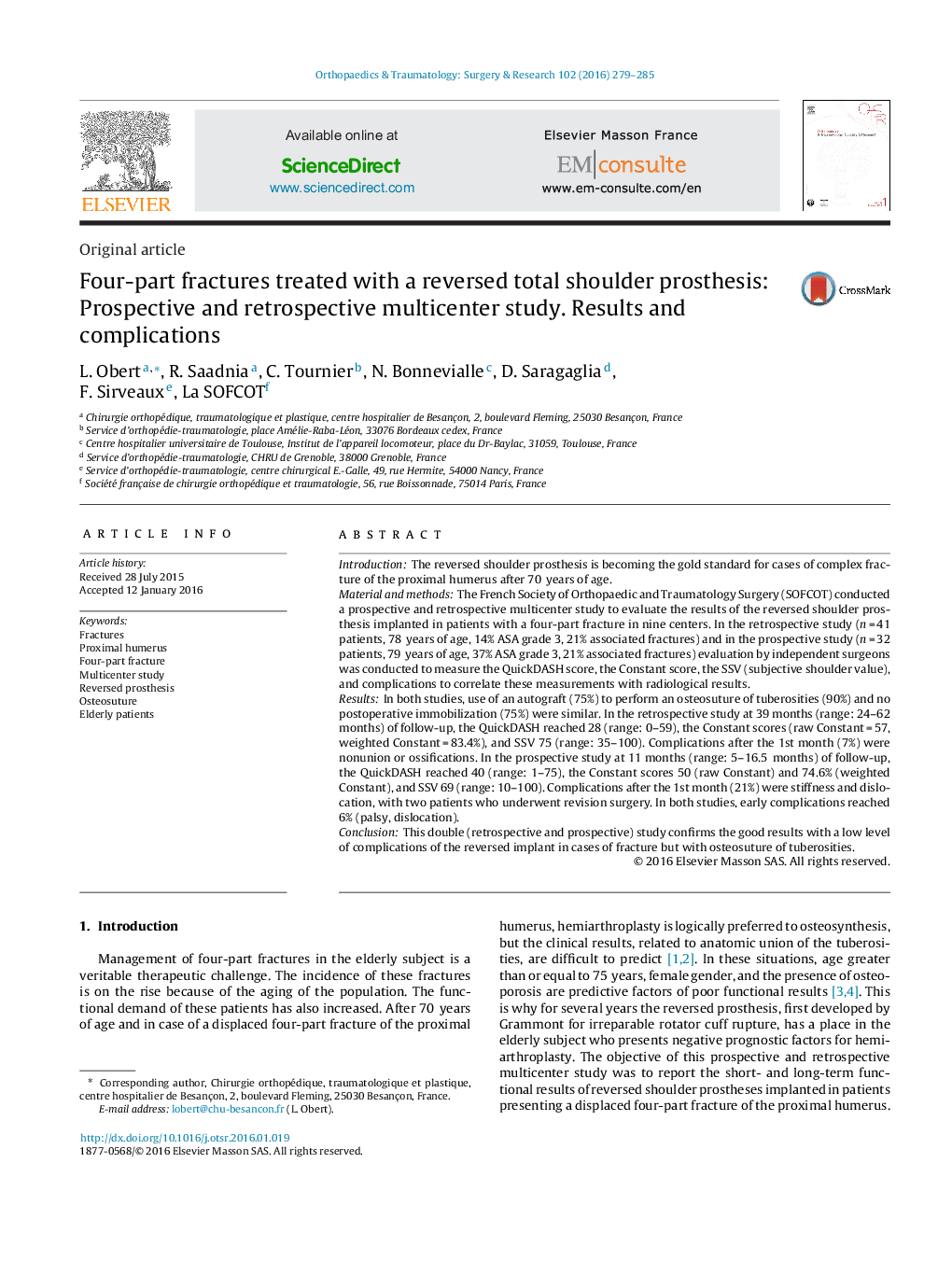| کد مقاله | کد نشریه | سال انتشار | مقاله انگلیسی | نسخه تمام متن |
|---|---|---|---|---|
| 4080727 | 1267565 | 2016 | 7 صفحه PDF | دانلود رایگان |
IntroductionThe reversed shoulder prosthesis is becoming the gold standard for cases of complex fracture of the proximal humerus after 70 years of age.Material and methodsThe French Society of Orthopaedic and Traumatology Surgery (SOFCOT) conducted a prospective and retrospective multicenter study to evaluate the results of the reversed shoulder prosthesis implanted in patients with a four-part fracture in nine centers. In the retrospective study (n = 41 patients, 78 years of age, 14% ASA grade 3, 21% associated fractures) and in the prospective study (n = 32 patients, 79 years of age, 37% ASA grade 3, 21% associated fractures) evaluation by independent surgeons was conducted to measure the QuickDASH score, the Constant score, the SSV (subjective shoulder value), and complications to correlate these measurements with radiological results.ResultsIn both studies, use of an autograft (75%) to perform an osteosuture of tuberosities (90%) and no postoperative immobilization (75%) were similar. In the retrospective study at 39 months (range: 24–62 months) of follow-up, the QuickDASH reached 28 (range: 0–59), the Constant scores (raw Constant = 57, weighted Constant = 83.4%), and SSV 75 (range: 35–100). Complications after the 1st month (7%) were nonunion or ossifications. In the prospective study at 11 months (range: 5–16.5 months) of follow-up, the QuickDASH reached 40 (range: 1–75), the Constant scores 50 (raw Constant) and 74.6% (weighted Constant), and SSV 69 (range: 10–100). Complications after the 1st month (21%) were stiffness and dislocation, with two patients who underwent revision surgery. In both studies, early complications reached 6% (palsy, dislocation).ConclusionThis double (retrospective and prospective) study confirms the good results with a low level of complications of the reversed implant in cases of fracture but with osteosuture of tuberosities.
Journal: Orthopaedics & Traumatology: Surgery & Research - Volume 102, Issue 3, May 2016, Pages 279–285
